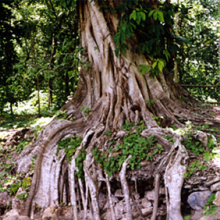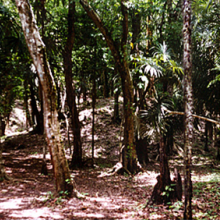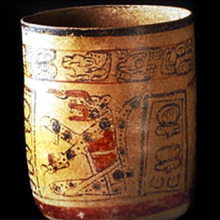explore
Jungle Lowlands - Wildlife

The Maya Lowlands are home to thousands of species of flowers, plants, trees, tubers and other vegetation useful for human survival. For example, in regions of higher temperatures and heavy rainfall, flowers such as orchids and lianas (or vines) are abundant. The lowland landscape is full of various types of produce including figs, pumpkin, sapodilla, papaya, various fruits, and vanilla vine. The Maya domesticated many plants used on a daily basis, and took advantage of trees that produced edible food and condiments such as avocado, ramon, allspice, and breadnut trees.

The tropical environment requires special protection from extreme heat, and shelter from heavy rainfalls and storms that especially plague the region during its winter season. Various types of palms, such as the escoba and cohune palm, are important building materials still used today to make homes. The jungle environment encompasses a large area of the central and northern lowlands of Mesoamerica. Unique plants have adapted to grow quickly, even at the expense of other plants (e.g. Strangler tree at left). Jungle ecosystems are home to large numbers of plant and animal species that are not found anywhere else. Populations are highly localized, dependent upon one another, and are vulnerable to change.

Jungle environments are dense, and difficult to penetrate on foot. As in ancient times roadways, walkways, and even archaeological sites have to be constantly maintained in order to prevent the jungle terrain from completely enveloping ancient sites. The mound visible in the centre of the image is an ancient Maya structure from Lamanai, Belize. Hundreds of years ago, the structure and the forest now surrounding it, would have been part of a large, well manicured and developed plaza incorporating several other structures and an enormous amount of lime plaster. This area was extensively cleared and the structures excavated about 20 years ago, demonstrating just how quickly the jungle reclaims land.

The lowlands provided ample hunting resources with two species of pig (white-lipped and peccary), tapirs, armadillo, agouti, brocket and white-tailed deer. Dogs were domesticated and eaten, and a delicacy even today is the paca or gibnit - a large edible rodent. Game birds included quail, curassows, chachalacas, and possibly the turkey. The highly prized feathers of the quetzal bird are only found in the highland rainforest. Jaguars, ocelots and jaguarondi were valued for their pelts and were symbolic of elite status.